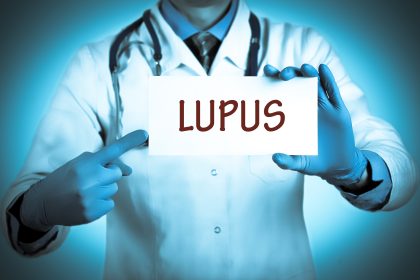Hyperemesis gravidarum, often described as pregnancy sickness in its most severe form, affects approximately 2 to 3 percent of all pregnancies in the United States. This condition goes far beyond typical morning sickness, causing intractable vomiting that leads to weight loss, dehydration, and metabolic disturbances. Despite its significant impact on the lives of affected women and their families, the exact cause remains largely unknown, and treatment can be particularly challenging.
Understanding the underlying causes
While researchers haven’t pinpointed the exact cause of hyperemesis gravidarum, several theories have emerged to explain this debilitating condition. Medical experts have identified 3 potential contributing factors:
- Hormonal fluctuations play a significant role, particularly human chorionic gonadotropin (hCG), which peaks during the first trimester when hyperemesis symptoms typically begin. Some studies show a correlation between higher hCG concentrations and more severe symptoms, though this data hasn’t been entirely consistent across research.
- Estrogen levels may contribute significantly to pregnancy nausea. Estradiol increases early in pregnancy and decreases later, mirroring the typical course of pregnancy sickness. Women who experience nausea from estrogen-containing medications outside of pregnancy face higher risks of developing hyperemesis.
- Genetic factors appear influential, as women with first-degree relatives who experienced hyperemesis gravidarum show increased risk themselves. Researchers have potentially linked two specific genes, GDF15 and IGFBP7, to the development of this condition.
Certain women face higher risks of developing hyperemesis, particularly those carrying multiple fetuses or molar pregnancies, which involve increased placental mass. Women who experience motion sickness, migraines, or nausea from estrogen-containing medications outside of pregnancy also face elevated risks. Conversely, taking multivitamins before six weeks of pregnancy and maternal cigarette smoking appear to provide some protective effects.
Recognizing when morning sickness becomes something more
Diagnosing hyperemesis gravidarum remains challenging due to the lack of universal diagnostic criteria. However, physicians generally look for extreme cases of nausea and vomiting during pregnancy that cause significant dehydration and weight loss, typically defined as losing at least 5 percent of pre-pregnancy weight.
The condition typically begins around 5 to 6 weeks into pregnancy, though symptoms starting after nine weeks should prompt investigation of alternative diagnoses. Physical examination focuses on assessing dehydration through vital signs, mucous membrane dryness, and skin elasticity. Laboratory testing looks for evidence of dehydration and metabolic disturbances, including ketonuria, electrolyte abnormalities, and elevated hematocrit.
Dr. Sarah Johnson, an obstetrical specialist not quoted in the original study, notes that distinguishing hyperemesis from other serious conditions remains crucial. “Many conditions can cause severe nausea and vomiting during pregnancy, from gastrointestinal issues like appendicitis to metabolic problems like hyperthyroidism. We need to rule these out before diagnosing hyperemesis gravidarum.”
Treatment approaches for suffering mothers
The American College of Obstetrics and Gynecology provides guidelines for treating hyperemesis gravidarum, recommending a stepwise approach beginning with non-pharmacological interventions. Treatment typically follows 5 progressive stages:
- Initial management often involves switching from prenatal vitamins to folic acid supplementation alone, using ginger supplements (250 mg orally four times daily), and applying acupressure wristbands.
- First-line pharmacological therapy combines vitamin B6 (pyridoxine) and doxylamine, both considered FDA pregnancy category A medications, meaning studies have not shown risks to the fetus.
- Second-line medications include antihistamines and dopamine antagonists such as dimenhydrinate, diphenhydramine, prochlorperazine, or promethazine, administered orally or rectally depending on the severity of symptoms.
- For women experiencing dehydration, intravenous fluid therapy becomes necessary, along with intravenous antiemetics like metoclopramide, ondansetron, or promethazine. Electrolyte replacement occurs as needed based on laboratory findings.
- Severe, refractory cases may respond to intravenous or intramuscular chlorpromazine or methylprednisolone, though these treatments are typically reserved for the most challenging situations.
The Pregnancy-Unique Quantification of Emesis and Nausea (PUQE) score helps clinicians assess symptom severity and monitor treatment effectiveness. This validated questionnaire evaluates the duration of nausea, vomiting, and retching, along with the psychological and physical impact on quality of life.
The long-term outlook for affected women
For most women with hyperemesis gravidarum, symptoms resolve by the 20th week of pregnancy. However, approximately 10 percent of patients continue experiencing symptoms throughout their entire pregnancy. Encouragingly, experiencing hyperemesis in one pregnancy doesn’t necessarily increase the likelihood in subsequent pregnancies.
The condition poses several maternal risks when inadequately treated, including vitamin deficiencies, malnutrition, and dehydration. In severe cases, vitamin B1 deficiency can lead to Wernicke encephalopathy, causing permanent neurological damage if left untreated. Physical complications from forceful vomiting have included rare but serious events like esophageal rupture and pneumothorax. Women with hyperemesis also experience higher rates of depression and anxiety during pregnancy.
Despite these challenges, the condition appears to have limited effects on fetal outcomes. Studies show conflicting information regarding associations with low birth weight and prematurity, but hyperemesis has not been linked to increased perinatal or neonatal mortality or higher rates of congenital anomalies.
The importance of comprehensive care
Women with hyperemesis gravidarum benefit most from interprofessional healthcare teams providing integrated, patient-centered approaches. Primary healthcare providers should refer affected women to obstetric specialists promptly, and inpatient management becomes necessary for women requiring intravenous medications and fluids, particularly when outpatient treatments fail or when dehydration or electrolyte disturbances become severe.
For women planning pregnancy, taking daily multivitamins with folic acid at least one month before conception not only reduces the risk of congenital anomalies but has also been associated with reduced frequency and severity of nausea and vomiting during pregnancy.
As research continues into the causes and most effective treatments for hyperemesis gravidarum, affected women deserve compassionate care that acknowledges both the physical and emotional toll of this challenging condition.














